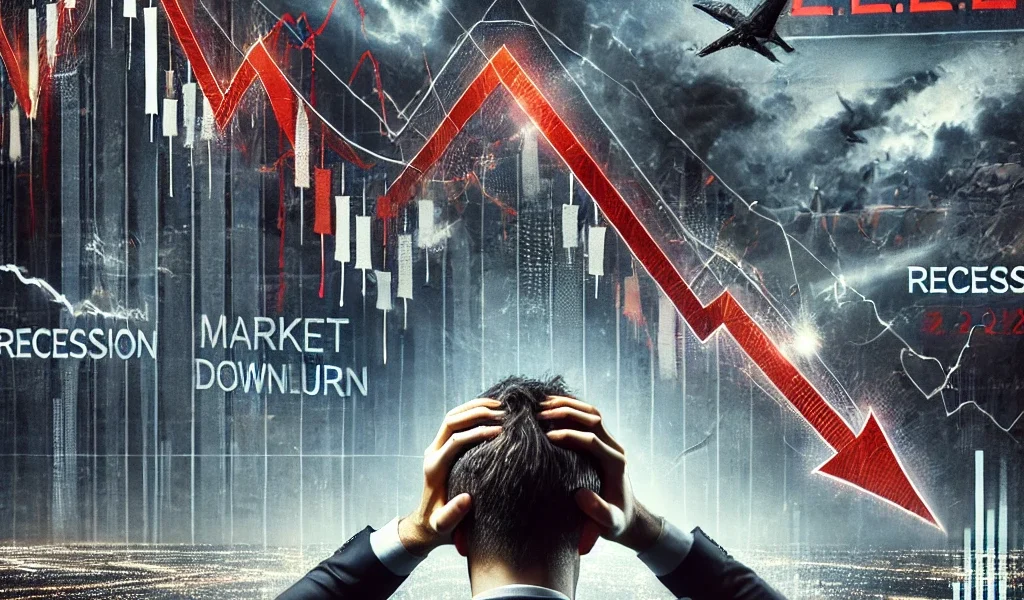Introduction
Stock market crashes are inevitable events that create panic among investors, shake global financial markets, and impact economies worldwide. While every crash has unique causes, patterns often emerge that help investors understand what went wrong and how long recovery might take. In this article, we will explore the causes of the latest stock market crash, analyze its impact, and discuss potential recovery timelines based on historical data and expert insights.
Causes of the Latest Stock Market Crash
Understanding the reasons behind a stock market crash can help investors make informed decisions. Here are the major factors that contributed to the most recent crash:
1. Macroeconomic Uncertainty
- Global economic slowdowns, high inflation, and supply chain disruptions often create uncertainty, causing investors to pull out their funds.
- Rising interest rates by central banks to control inflation can make borrowing more expensive, leading to a decline in business investments.
2. Geopolitical Tensions
- Conflicts between major economies, trade wars, or military confrontations can trigger market sell-offs.
- Sanctions, tariffs, and disrupted global trade routes impact investor confidence and corporate earnings.
3. Overvaluation of Stocks
- Stock markets often experience periods of overvaluation when prices rise beyond the actual earnings potential of companies.
- A sudden correction occurs when investors realize stocks are overpriced and begin selling off shares.
4. Interest Rate Hikes
- Central banks, such as the Federal Reserve, increase interest rates to combat inflation, making borrowing more expensive.
- Higher interest rates reduce corporate profits and lower investor sentiment, leading to market declines.
5. Massive Institutional Sell-Offs
- Hedge funds and institutional investors often trigger crashes by selling large portions of their holdings.
- These mass sell-offs create panic in the market, prompting retail investors to follow suit.
6. Black Swan Events
- Unforeseen global crises, such as pandemics, natural disasters, or financial collapses, can cause sudden market turmoil.
- For example, the COVID-19 pandemic in 2020 led to one of the fastest stock market crashes in history.
Market Impact: Sectors That Took the Biggest Hit
Different industries react differently to market crashes. Here are some of the sectors that typically suffer the most:
1. Technology Sector
- High-growth tech stocks often have inflated valuations, making them vulnerable to sharp declines.
- Companies reliant on venture capital face funding difficulties when interest rates rise.
2. Banking and Financial Sector
- Banks suffer when economic slowdowns lead to higher default rates on loans.
- Interest rate hikes affect profit margins in lending businesses.
3. Real Estate and Construction
- Higher borrowing costs slow down property purchases and infrastructure projects.
- Investors pull out funds from real estate investments, causing price drops.
4. Consumer Discretionary Sector
- Companies selling luxury goods, travel, and entertainment services experience reduced demand as consumers cut non-essential spending.
Recovery Timeline: When Will the Market Rebound?
While stock market crashes create fear, history shows that markets eventually recover. Here are the key phases of a typical recovery:
1. Panic and Sharp Decline (0-3 Months After Crash)
- Investors rush to sell stocks, leading to rapid losses.
- Market volatility remains high, and uncertainty dominates headlines.
2. Stabilization and Bottoming Out (3-6 Months After Crash)
- Stock prices stop declining as institutional investors start re-entering the market.
- Economic indicators show mixed signals, and governments introduce stimulus measures.
3. Gradual Recovery and Rebuilding Confidence (6-18 Months After Crash)
- Companies adapt to new market conditions, improving earnings and reducing costs.
- Interest rates stabilize, and investor sentiment starts improving.
- Historical trends suggest that stock markets begin showing signs of recovery within 12-18 months after a major crash.
4. Bull Market Resurgence (18+ Months After Crash)
- Stock markets enter a prolonged growth phase, often reaching new all-time highs.
- Long-term investors who stayed invested benefit from the rebound.
Key Lessons for Investors
1. Stay Calm and Avoid Panic Selling
- Market downturns are temporary; selling in panic often locks in losses.
2. Diversify Your Portfolio
- Investing across multiple sectors and asset classes helps mitigate risk.
3. Focus on Quality Stocks
- Companies with strong balance sheets, solid cash flow, and competitive advantages recover faster.
4. Look for Buying Opportunities
- Market crashes present an opportunity to buy fundamentally strong stocks at discounted prices.
5. Adopt a Long-Term Perspective
- Investors who stay invested during downturns typically see their portfolios recover over time.
Conclusion
Stock market crashes are an unavoidable part of investing, but they also provide opportunities for long-term wealth creation. By understanding the causes, market impact, and recovery timelines, investors can make informed decisions and position themselves for future gains. The key is to remain patient, avoid emotional trading, and focus on long-term strategies that withstand short-term market turbulence.




